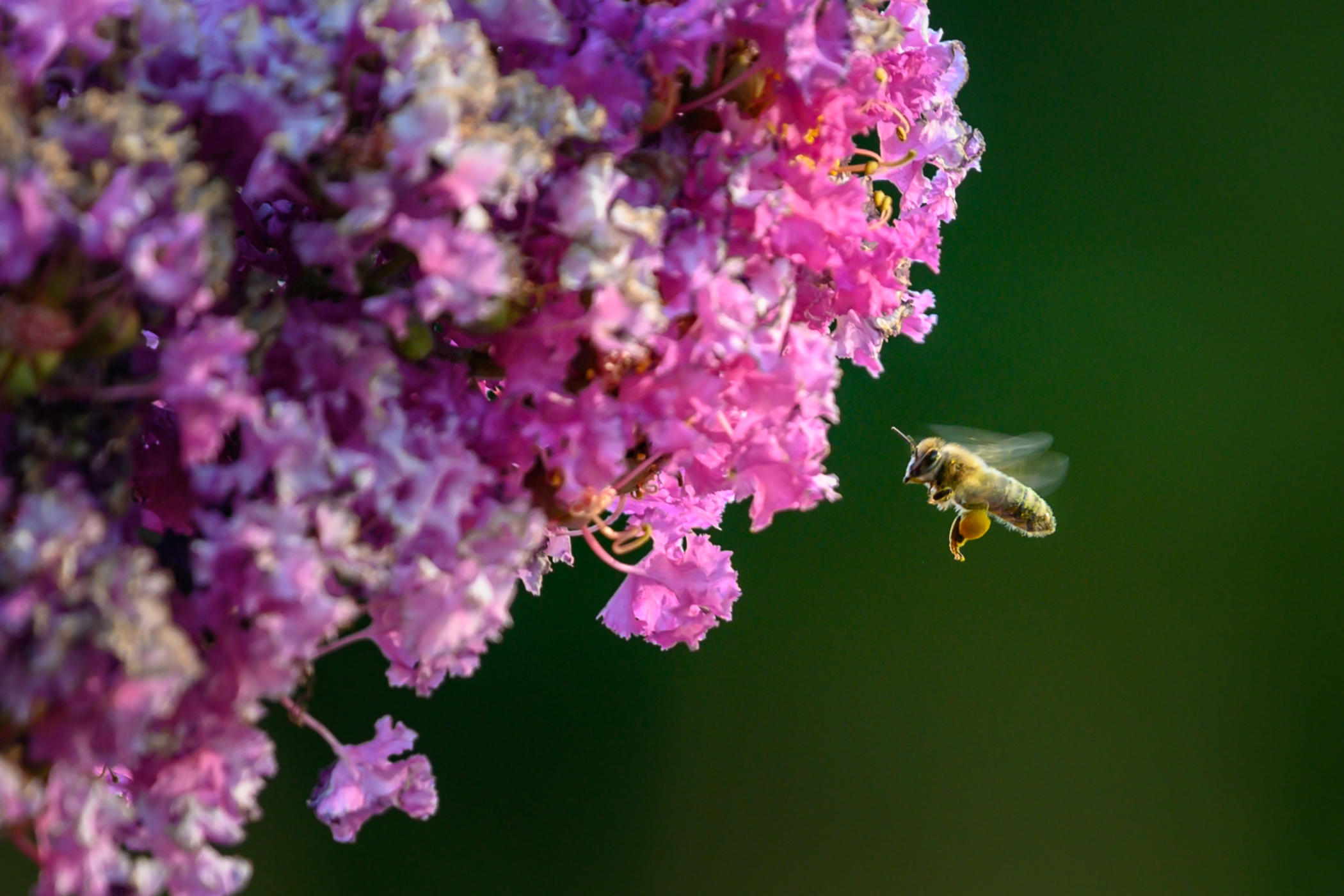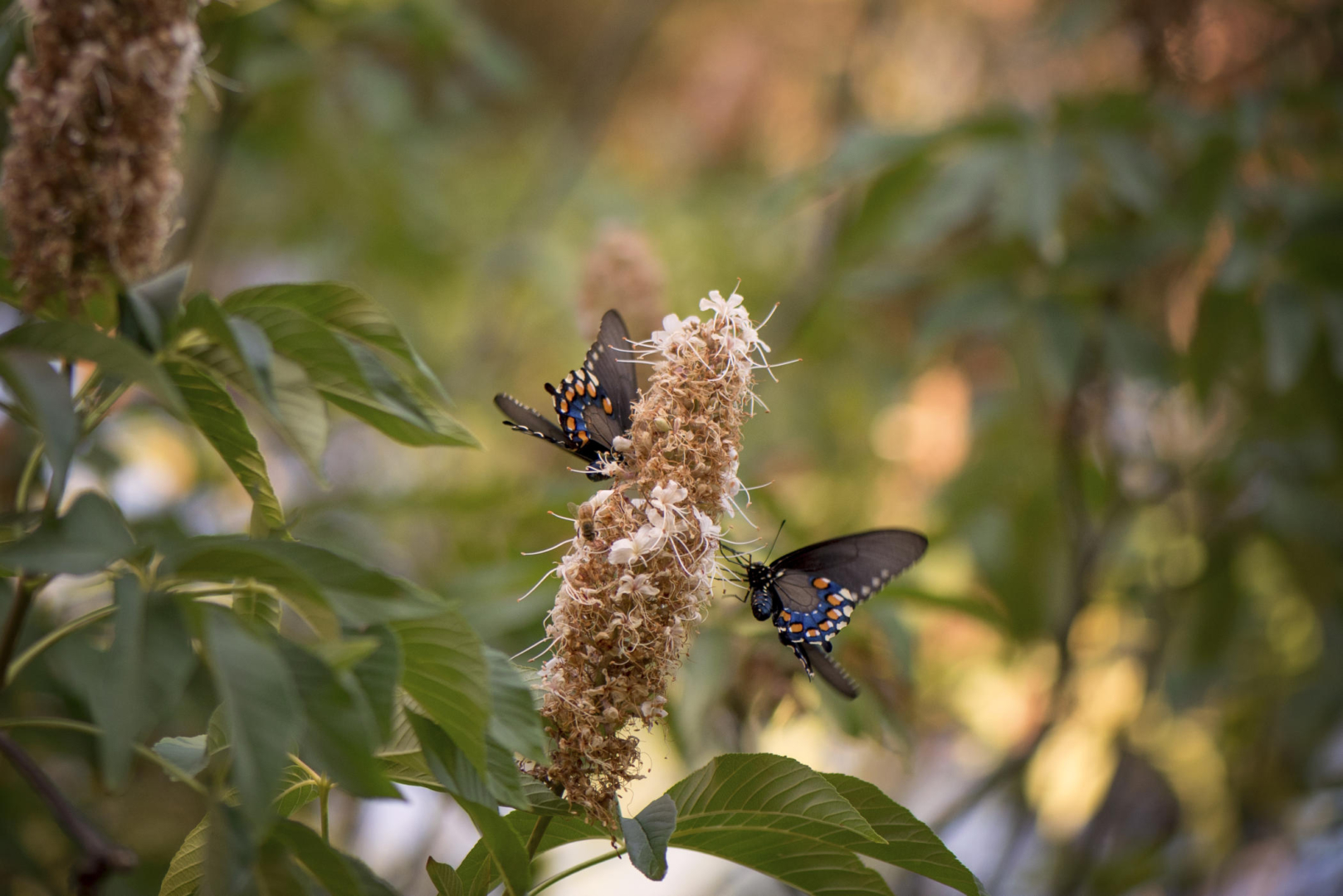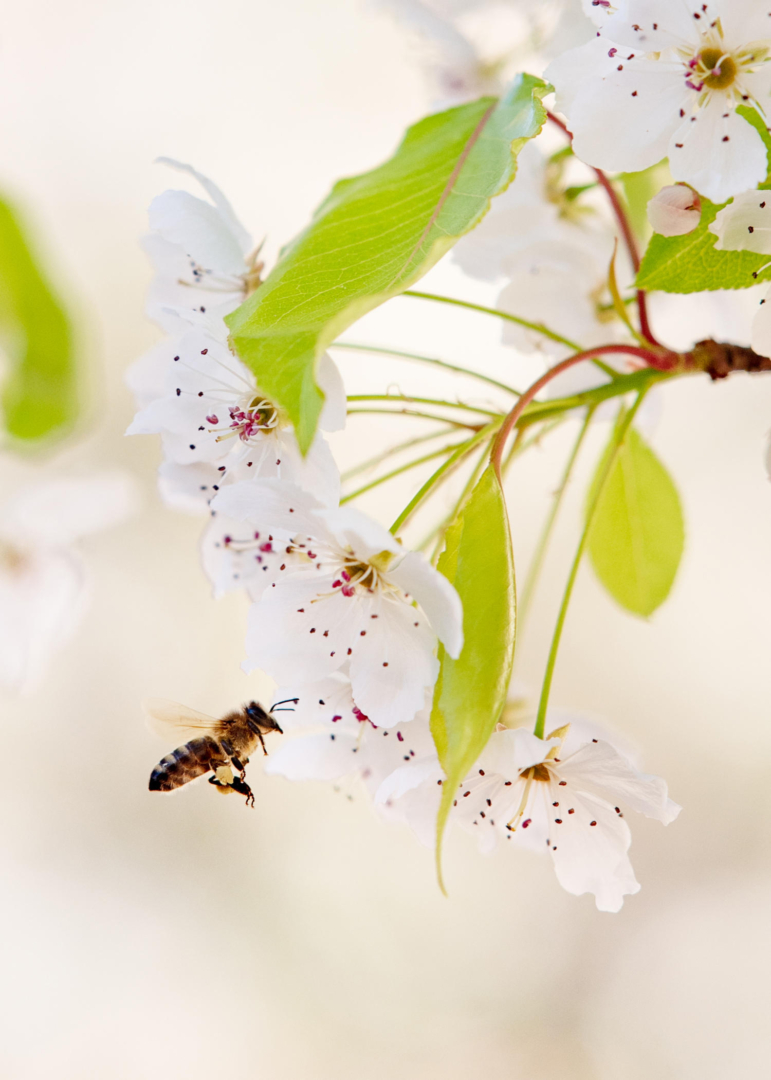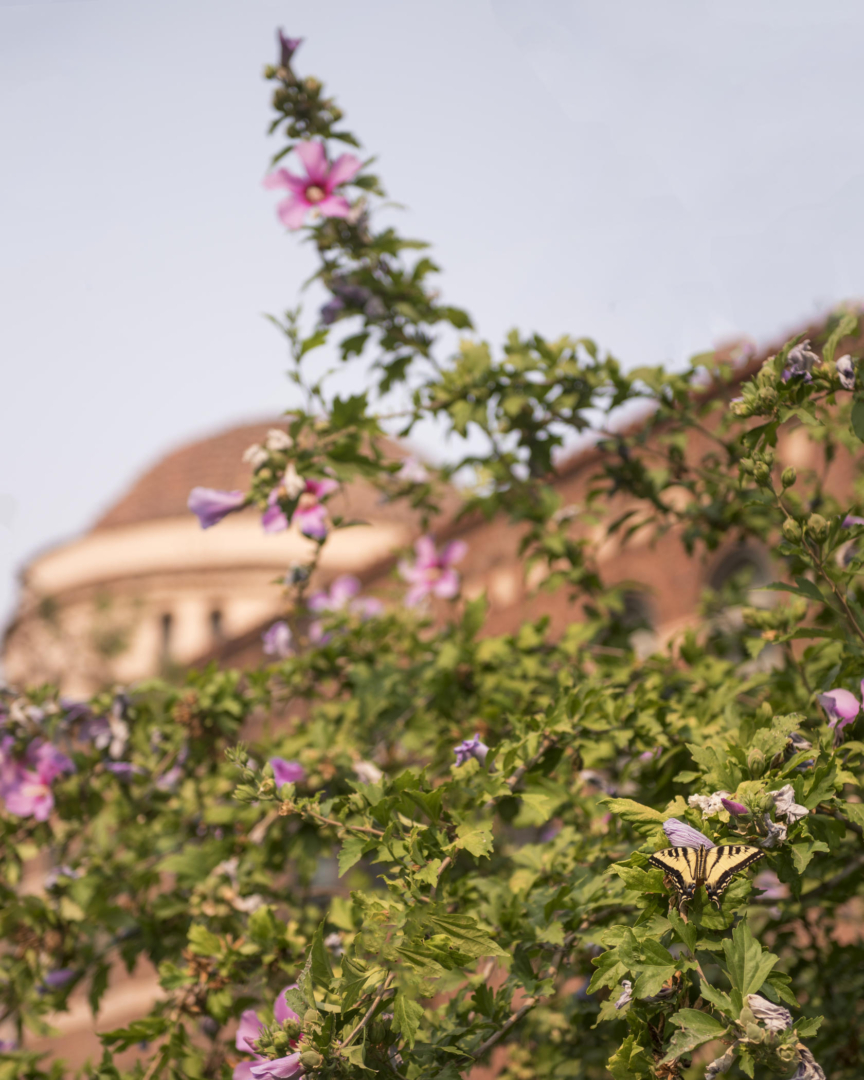Protection of Pollinators Earns Bee Campus USA Designation

A bee pollinates flowers on Tuesday, June 23, 2020 in Chico, Calif. (Jason Halley/University Photographer/CSU, Chico)
A swallowtail butterfly flutters amid clusters of tiny white buckeye blossoms. Hummingbirds dart among the pink penstemon. A honeybee, legs laden with pollen, pauses amid the purple petals of a Western redbud.
As blooms begin unfolding in early spring, Chico State is brimming with pollinators welcoming the changing seasons and abundance of flowers that will stretch through summer and fall. If it seems like those canvassing for pollen and nectar have been in higher numbers in recent years, it’s no coincidence.
“If you’re looking for it, you can see the difference,” said Mike Alonzo (Agriculture, ’07), manager of grounds and landscape services. “There are little pockets all over campus.”
In the last two years, Facilities Management and Services (FMS) has been working diligently to better support wildlife, and in doing so has racked up a number of recognitions for the University. In addition to being a Certified Butterfly Garden by the National Butterfly Association, an official Monarch Waystation via Monarch Watch, and Certified Wildlife Habitat through the National Wildlife Federation, in mid-February, the Xerces Society added one more to the list: Bee Campus USA.
“Pollinators are really suffering right now so I think it’s kind of incredible that Chico State could help conserve them and provide habitat for them,” said senior Faith Churchill, a physical and environmental geography major. “They provide for a lot of our crops—they have inherent value in our ecosystem.”

Research has shown significant declines in native pollinator population sizes globally, with up to 40 percent of pollinator species at risk of extinction as a result of habitat loss, the use of harmful pesticides, and climate change, the Xerces Society reports. Bee Campus USA provides a framework for communities to support native pollinators by increasing native plants, providing nest sites, and nearly eliminating the use of neonicotinoid pesticides, glyphosate herbicides, and other potentially dangerous chemicals.
The campus Vegetation and Arboretum Committee initially was the impetus for change, pushing for more native landscape and intentionally created habitat. FMS subsequently began consulting with faculty experts and reconsidering its pesticide applications, even turning to owls to control some pests.
Of course, the George Petersen Rose Garden has long been a major attractor to bees and butterflies, but its popular petal show has become even more inviting since the University ceased pesticide injections among its dozens of rosebushes about five years ago. And such is the case for dozens of Chinese elms and crepe myrtles, which are also no longer being injected seasonally. Alonzo said the resulting pressure from damaging insects and disease was not as bad as landscape crews anticipated and they’ve found other, more holistic treatments seem just as effective.
“It’s taught the campus a lot about the viability of more sustainable practices. We don’t have to spray and inject everything just to make it look pretty if we just manage it a little differently,” Alonzo said. “The plants will be healthier and maybe even easier to maintain and there are benefits to the fauna as well as campus guests.”
Churchill took charge of earning formal recognition as part of a fellowship through the California Climate Action Corps, a pilot Americorps program. Working closely with Alonzo, the University’s former Director of Energy and Sustainability Cheri Chastain, and Associated Students Sustainability Coordinator Nani Teves, she researched several certifications the University could be eligible for and reported on the pros and cons. When her fellowship ended, she spent the fall semester pursuing the recognitions as an FMS Green Campus intern.

One of Churchill’s favorite transformations has been the Yolo Hall bioswale. A large swath of turf behind Acker Gymnasium was taken out a few years ago and replaced with trees, shrubs, and grasses that filter storm runoff and restore natural watershed processes to filter and degrade metals and organic contaminants.
“Turf is really water-intensive. Whenever we can take that out and plant native species that are more drought-tolerant, that is a benefit because we are saving water,” she said. “And the native plants support more species diversity, more shelter, and more food.”
Pollinators are a keystone species in essentially every ecosystem on earth, enabling the reproduction of over 85 percent of all flowering plants and 67 percent of agricultural crops. In addition to the common honeybee, there are more than 20,000 bee species globally and around 3,600 species of bees native to the United States. While bees are the most important pollinator, butterflies, moths, beetles, flies, wasps, bats, and hummingbirds also contribute to pollination.
With warming weather in recent weeks, varying species can be spotted buzzing all over campus, flitting from flower to flower among native plants that have slowly been transforming the landscape. With increased plantings of California wild roses, matilija poppies, toyon, and narrowleaf and showy milkweed, among others, it’s created habitat and food resources for a multitude of species.
“The campus itself, it’s just full of full blooms,” Alonzo said. “We are starting with the cherry trees now and others will start popping in a few weeks.”

With such diversity and a lot of intentionality about native plants, pollination now takes place most months of the year, Alonzo said. The midnight and margarita bop penstemon, salvia, lipstick red and bees bliss sage, Oregon grape, and California fuchsias are favorites—not just for bees but hummingbirds too.
He’s particularly looking forward to the palo verde trees near Yolo Hall. When they burst with yellow blossoms from May to August, they can host four different types of bees at any one time, including carpenter bees, sweat bees, wasps, and honeybees.
If people are interested in learning more about how to transform their own landscaping, Alonzo recommends they visit the Pollinator Garden at Gateway Science Museum. Churchill also hopes to soon share details with campus about a service-learning opportunity for students to support pollinator conservation that was established as part of the Bee Campus USA certification.


